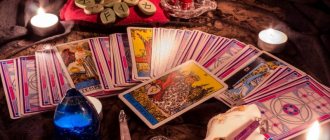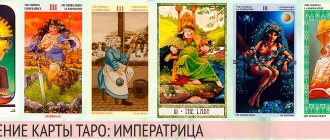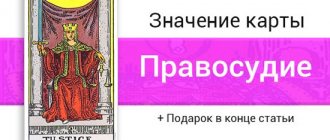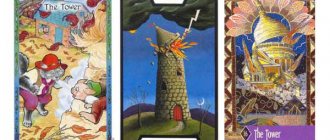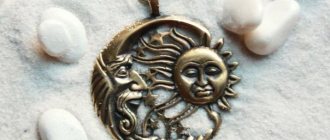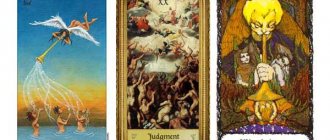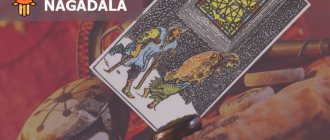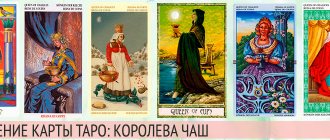The meaning of the sun for humanity
Almost all the tribes that have ever existed on our planet worshiped the celestial body. He was considered an eternal and powerful force, a source of inexhaustible energy. People have always associated grace and their hopes for a better future with the sun.
Thanks to observations of the burning star, humanity has made many discoveries. This is a wheel, a calendar and other amazing things. Therefore, it is not surprising that even modern people very often use the symbol of the sun in amulets and tattoos.
Three signs, three spheres
There is a reason why these three signs are especially important. The Sun is essential to our existence and is literally the center of our solar system, so naturally it has a significant place in astrology. The Moon is the closest celestial object to us, so again, you can understand why its astrological influence would also be particularly noticeable. Finally, your rising sign represents the very beginning of your birth chart and is the starting point for the placement of your zodiac signs, so it is a vital part of your core astrological self.
Spaceships are heading to Mars and will be there by February
Arthur Murray taught to observe the degree of reversal: the beginning of the era of dancing alone
Thinking with your phone: a psychologist listed the signs of smartphone addiction
The sign of the sun in ancient times
Archaeologists have repeatedly found rock paintings of the sun. In ancient times, people depicted the celestial body as a closed circle with a small dot in the center. This very first form symbolized self-knowledge and the cyclical nature of things happening in the world. Sun signs were also applied to amulets, jewelry, items of clothing, and houses were decorated with them. People considered the burning star to be a kind of deity, worshiped it and were even afraid of it.
The general meaning of the solar pattern is the natural flow of time, which is characteristic of the entire universe. The closed rim of the circle testifies to the infinity of everything that exists on earth. People put such a sacred meaning into the symbol of the sun in Egypt, Asia, India and other ancient civilizations.
Over time, each nation developed its own sign of the heavenly body, which had a special meaning.
Three suns and the secret language of embroidery
Representatives of the people spoke about the secrets of Chuvash embroidery, wedding rituals and what the symbol of three suns means at the round table “Tea Party in Chuvash” as part of the Rosbalt project “Faces of St. Petersburg”.
The Chuvash are descendants of the ancient Suvaro-Bulgars, the fifth largest people in Russia. They live in the territory of the Middle Volga and Urals, in the places where the very first medieval state in Eastern Europe, Volga Bulgaria, used to be located. Most residents of Chuvashia profess Orthodox Christianity, but among them there are adherents of traditional beliefs and Muslims.
The republic has long been famous for its talented embroiderers. They decorate clothes, household items and ritual accessories with ornaments. Representative of the people Olga Sinitsyna says that girls used to be taught this skill from the age of 4-5. By the age of 10-12, having become craftswomen, they began to invent and embroider patterns on their own and were already preparing a dowry for themselves.
The Chuvash ornament is varied: it can be geometric, representing images of plants and animals. It is permeated with history, worldview and worldview of the people. From an embroidery design you can learn a lot about the life of the craftswoman, whether her home is rich, how many children she has, whether she is happily married.
“For example, in Chuvashia, the bride’s veil - perkinjep - encrypted some kind of message to the groom. The girl was covered with this blanket and taken to the far corner of the hut, where she and two friends performed the bride’s lament. It was believed that the more the bride suffers in this song, the better and happier her life will be after marriage. As for the groom's scarf, it is interesting because it was also embroidered by the bride and, naturally, it concealed her thoughts, wishes, and ideas about family happiness. The girl gave the scarf to the groom as a sign of her consent to marry him. Throughout the wedding, he carried it on his shoulders,” Sinitsyna noted.
She also said that the girl’s headdress was embroidered with beads, coins, shells and beads. Its peculiarity is that the craftswoman selected coins not only by size, but also by sound. Thus, when the girl walked, a beautiful melody was heard.
The Chuvash legend of the three suns aroused particular interest among those gathered.
It turns out that a long time ago the earth was warmed by three suns. People did not know what winter, snow, ice were. Amazing plants grew around, providing everything needed for life. Despite this, some people were outraged that the earth was very hot. They decided to call a hunter to kill two luminaries, leaving only one.
The hunter completed his task. But the last sun was very afraid that they would kill him too. Then it ran far into the sky, where the arrow could not reach it. And then people noticed with horror that it had become cold. Very cold! They realized that they had made a mistake and turned to the sages for advice.
The sage said: “We must return the only luminary with good deeds, draw three suns on our clothes, lure him with songs and dances.” Since then, the Chuvash have painted three suns everywhere: on clothes, on household items. These symbols also appear on national symbols.
“On our national flag we can see three stars representing three suns, which symbolize that we were, are and will be. In Chuvash it sounds like “pulna, pur, pulatpar,” says Andrey Fomiryakov. - Under the suns there is a tree. This symbol was taken from runic writing (the ancient ancestors of the Chuvash used a runic writing system, the remains of which were preserved in the form of tamga, brands and embroidery elements). “The Tree of Life” personifies the unity of the peoples living in Chuvashia.”
As for the national cuisine, products of plant origin predominate in the food of the Chuvash. The main grain crops have long been rye, barley, spelt, oats, millet, and buckwheat. Pancakes and flatbreads are also baked from buckwheat and millet flour.
“The most delicious, delicious and, of course, festive dish is khuplu - a large round pie made from unleavened dough. The filling of a khuplu is quite complex. The first layer consists of porridge or finely chopped potatoes, the second - from finely chopped meat, the third - from a thin layer of fatty meat or lard. Huplu
for guests it is prepared from dough mixed with milk and eggs,” noted Ekaterina Kondratyeva.
The Chuvash have several distinctive features. As Ekaterina Kondratyeva says, according to popular beliefs, a person is obliged to care for old parents and escort them to the “other world” with dignity, as well as raise children to be good people.
There have never been abandoned children in Chuvash villages. Orphans were taken in by relatives or neighbors. The kids were raised as their own sons and daughters.
“According to Chuvash ideas, a kind, sincere, real person is one who has a good “kamal”, which means the inner spiritual essence, as well as the best traits of his character,” Ekaterina Kondratyeva shared her thoughts about the mentality of the people.
The sacred number of the Chuvash is seven. As the representatives of the people themselves admitted, Chuvash paganism was characterized by a multi-tiered view of the world. It consisted of three parts - top, “ours” and bottom - and seven layers. Three layers were located in the upper world, one in “ours,” and three more in the lower ones. The Tree of Life connects all seven layers. People worshiped this symbol and believed that they could communicate with their ancestors.
It was considered extremely important to instill in children a love of work. A Chuvash child began to help his family from the age of 5-6.
“The ancestors of the Chuvash believed that a person should not just love work, but have a habit, a need to work, and not waste time. Even the concept of “free time” in the Chuvash language is translated not as “irĕklĕ văkhăt” (Irĕk - freedom), but as “push văkhăt” - empty time,” added Daria Rogoznaya.
At the end of the meeting, Andrei Fomiryakov spoke about outstanding figures of Chuvashia. About Andriyan Nikolaev - the first cosmonaut to work in orbit without a spacesuit, Dmitry Fomiryakov - one of the most titled karatekas in Russia, Pyotr Egorov - one of the creators of the fence of the St. Petersburg Summer Garden, about Nadezhda Pavlova - an incredibly beautiful Chuvash ballerina.
Sara Gazdanova
The project was implemented using a grant from St. Petersburg.
Solar symbol among the peoples of the world
For the Aztecs, the closed circle served as a kind of multifunctional calendar, which had the appearance of a sun stone. With its help, they determined astrological data and found out the time. The talisman was also used for harmonization and knowledge of the future.
The Indians believed in the solar spirit, which is the progenitor of everything and is responsible for the cycle of things. Amulets with his image gave strength and protection to warriors, warmed them on cold nights and brought good luck.
The Scandinavians described the symbol as a wheel from the quadriga of the sun itself. It was made exclusively from gold. And it meant only positive things: prosperity, prosperity, health, fertility and a rich harvest.
The symbol of the sun in ancient Egypt bore the original name - “winged disk”. He personified Horus, who stood up to fight Set. The talisman was used to protect against any negativity, be it witchcraft or physical influence.
The Slavs loved to make nauzes - amulets in the form of knots, personifying the sun. They performed protective functions and drove away dark thoughts. People actively make such amulets to this day.
Let's look at the Slavic symbols of the sun in more detail.
Astrolatry in Christianity
Why do Christians, like the Mithraists once, persistently pay attention to the number 7 (seven) ? For the same reason why it has always been sacred in astrolatry.
Astrolatry (Greek: star worship) is a cult of worship of the spirits of the stars, and primarily the seven planetary deities and, above all, the sun god. Astrolatry was widespread in the Ancient World: Assyria, Babylon, India, Egypt, as well as on the American continent among such peoples as the Aztecs, Incas and Mayans.
Astrolatry (Greek: star worship) should not be confused with astrology (Greek: study of the stars) and astronomy (Greek: law of the stars). True, these terms are similar to the ear, since they begin with the word astro-, which comes from ancient Greek. ἄστρον - star. About the difference between these concepts, read the article entitled Astrolatry, astrology and astronomy.
In classical astrology, the seven astral spirits are called planetary geniuses (Latin genius - spirit), in Gnostic philosophy - archons (Greek ἄρχων - chief, ruler), in Hinduism - sapta rishi (Sanskrit sapta rishi - seven sages), in Zoroastrianism - amesha spenta (Aves. ameša spenta - immortal saints), and in Christianity - archangels (Greek ἀρχάγγελος - chief angel).
The seven planetary spirits are respectively located in the Seven Heavens of the Universe, each on his assigned sphere:
- Gabriel - the sky of the moon;
- Mikael - the sky of the Sun;
- Raphael - the sky of Mercury;
- Anael - the sky of Venus;
- Raguel - the sky of Mars;
- Remiel - the sky of Jupiter;
- Azrael is the sky of Saturn.
Christians borrowed the number of seven world rulers, although they changed the names of some. Below is a list of Christian archangels with translations of their names from the Semitic language:
- Gabriel is a strong god;
- Michael is the one who is like God;
- Raphael - healing god;
- Selaphiel - praying god;
- Uriel - light god;
- Barachiel - blessing god;
- Jehudiel is a god of praise.
Although Christians call the planetary gods “chief angels,” all seven names contain the word “god,” since the Semitic word “el” or “il” means “god.”
Below is an Orthodox icon called the Cathedral of the Holy Seven Archangels, which depicts the seven “holy” planetary gods. Chief among them, of course, is the Archangel Michael, since he is the central deity of the Solar System. Note the red cloak and the solar triangle emblem on Michael's shield. The color red and the All-Seeing Eye will be discussed further in the article.
Orthodox icon "The Council of the Holy Seven Archangels"
Christians call the seven archangels archangels (Greek αρχιστρατηγός - commander-in-chief). However, most often they give this title to the solar god Michael.
Heavenly armies of the Archangels, we always pray to you, unworthy ones, and with your prayers protect us with the shelter of the wings of your immaterial glory, preserving us, falling diligently and crying out: deliver us from troubles, like the rulers of the Highest Powers.
Orthodox troparion of the Council of the Archangel Michael and other ethereal Heavenly Powers
What does the reader think, why are there often seven domes over Orthodox churches, and why is one of them necessarily larger and taller than the rest? The seven domes symbolize the 7 planetary gods, led by the Sun God.
Seven domes - 7 planetary gods led by the Sun God.
Consequently, the above troparion (festive prayer chant), 7 archangels and 7 domes testify to the worship of 7 planetary gods (astrolatry), as well as polytheism (polytheism) in the Christian religion.
You can read more about the structure of the Universe in the article The Biblical Tabernacle - the image of the Universe, and about planetary rulers in the article The Seven Deadly Sins in Astrology.
Yarilo
This god was depicted as the sun or a bearded old man. A similar sign was applied to restore energy, balance, protection from any influences, gaining wealth, happiness, good offspring, maintaining health and masculinity.
The Slavic symbol of the sun greatly helped in family matters and was considered a home talisman. It was often placed as an amulet or figurine in the hallway, bedroom, living room and kitchen. Also, some craftsmen carved the image of Yarila on the external walls of houses.
What do the rays symbolize?
Astrologers were not long ago able to explain what the rays in amulets mean. On the star chart, you need to carefully consider the location of Ursa Minor and Ursa Major at midnight during the summer and winter solstices, as well as the autumn and spring equinoxes. If you draw imaginary lines from the North Star to these constellations, then you will get the sun's rays. It can be assumed that our ancestors used this sign to determine location.
In amulets, the rays are enclosed in a circle, thereby symbolizing the continuous cyclical nature of existence. They can also be bent clockwise and in the opposite direction. Among the Slavs, the symbol of the sun can have very different meanings depending on the number of rays depicted. Four means fire that burns on the earth. Six rays symbolize the wheel of the god Perun. And eight represents the power of solar fire.
New Jesuits?
In the 20th century, Ignatius Loyola had an “unexpected” follower - Adolf Hitler, the Fuhrer of the “thousand-year” Third Reich with his “Security Detachments” (German: Schutzstaffel), abbreviated SS. In 1933, the Catholic Church entered into a Concordat (agreement) with the Nazi Third Reich.
Pope Pius XI (real name Achille Ratti), nicknamed the “Pope of the Jesuits,” went down in history as the Pope who made a treaty not only with the German Nazis, but also with the Italian fascists. Earlier, in 1929, the Vatican signed the Lateran Treaty with the fascist Benito Mussolini. And in 1936, this Pope supported the fascist rebellion of dictator Francisco Franco in Spain, and also called for a “crusade” against the USSR. Such fascist leaders as Dollfuss, Horthy, Salazar also enjoyed his support.
Catholic cardinals and leaders of the Third Reich in a solar (Roman) salute.
Negotiations on signing a treaty with the Nazis on behalf of Pope Pius XI were led by the Secretary of State of the Holy See, Cardinal Pacelli. An interesting fact is that both Pope Pius XI and Secretary Pacelli (the future Pope Pius XII) studied at the Jesuit Gregorian University (Universitas Gregoriana Societatis Jesu), founded by Ignatius of Loyola.
“I make a mixture of people. I speak to him as to a mass... I learned this from the Jesuits and the Teutons. Hierarchical structure and education with symbols and rituals, that is, drumming in without understanding.” - Adolf Gitler
Hitler called the head of the elite Nazi SS formation, Heinrich Himmler, “my Ignatius of Loyola,” thus drawing a parallel between the Jesuits and the SS, an order-type elite organization of the Nazis. In many respects, the SS was indeed built like a Jesuit Order, with the conscious use of Jesuit methods of psychological influence and education.
In the book “Occult Reich” by Valentin Prussakov the following is written about the SS order:
Himmler created the SS as a privileged military organization during the Kaiser's era. In addition, the Jesuits served as a model for him. The founder of the Society of Jesus, Ignatius of Loyola, gathered around him “selected” young Catholics who swore unquestioning obedience to him. According to historians, Himmler tried to follow in his footsteps. He believed that the SS was called upon to play the same role in the “thousand-year Reich” as the Jesuits in the Spanish Empire. Despite the extreme orthodoxy of their views, members of the Society of Jesus carefully studied astrology, alchemy, Kabbalah, pre-Christian beliefs, etc., related to the “sciences of the pagans” ...
The Jesuits did not hesitate to use the “ungodly” knowledge of secret occult societies, which they themselves suppressed in the most ruthless manner. Also, Himmler, persecuting the Freemasons and the like, extracted from them a variety of information, including from the sphere of the occult. Using the example of the Jesuits, one could see that an organization with knowledge of the secrets of the human psyche is capable of keeping entire countries and peoples under its control. Himmler’s order, which adopted the methods of the Jesuits, also intended to take over the entire world not only by force of arms, but also through control of the human psyche...
The similarities between the SS and the Jesuits are not limited to their attraction to occult knowledge. After two novitiate years, the Jesuits followed several years of training and study before taking traditional monastic vows. The organizational structure of the SS was built in a similar way. As in the Society of Jesus, the SS took ordinary and special vows. They also had their own “inner circle” for initiates...
The emblem of the National Socialist German Workers' Party (German NSDAP) was the swastika (rotating cross) - a symbol of the Sun. And the emblem of the SS troops was a double rune called Sowilo. This ancient Germanic rune means the Sun.
Along with the emblems of the Nazi Party and the SS troops, another SS symbol is presented below. The so-called "Black Sun" was the central part of the mosaic of Wewelsburg Castle, where the officer's school and SS center were located.
The symbol of the Sun on the party emblem. Germanic rune Sowilo - Sun. Black Sun from Wewelsburg Castle.
Where did the Nazis get the swastika? The symbol of the rotating cross was “gifted” to the Nazis by the former Catholic monk Jörg Lanz. He later declared himself "Baron von Liebenfels" and founded the Ordo Novi Templi (Latin: Order of the New Temple), for which he chose the swastika as its emblem. Hitler not only read the Ostara magazine (German: Ostara), which was published by a former monk, but also met several times with the founder of the Order of the New Temple. Lanz himself considered Hitler his student and in 1932 wrote:
“Hitler is one of ours... You will soon see that he will win and develop a movement that will make the whole world tremble.” — Jörg Lanz
It is not known for certain whether the future Fuhrer was a member of the Order of the New Temple, but there are quite serious reasons to assert that the ideas of the former Catholic monk found application in the National Socialist movement.
Reichsführer SS Heinrich Himmler created a conclave of 12 Obergruppenführer - SS “priests”. And the Wewelsburg castle itself was considered the official capital of the SS and the cult center of the SS men. Did the meaning of the symbols of the SS, the Nazi order, coincide with the meaning of the emblem of the Catholic Jesuit Order by chance? No, because Nazism is essentially a solar cult, just like Christianity.
Where does the number of 12 SS Obergruppenführers and 12 Apostles of Christ come from, read the article Number 12 in the Bible and religions. For information about the connection between Wewelsburg Castle and the center of Catholicism - the Vatican, see a fragment of the 1998 documentary “Nazism”.
Wewelsburg - the cult center of the SS
Solar cross
This symbol has four rays and personifies natural elements, as well as important events in life: the autumn and spring equinoxes, the summer and winter solstices. This amulet was most suitable for forest guardians and warriors.
This sign was worn as an amulet only by mature people in order to receive the help of their ancestors in gaining wisdom and raising a child. The symbol of the sun in the form of a cross was not allowed to be worn by children, boys and girls, since it was believed that it would spoil the character or disrupt the psyche.
Black Sun - another solar symbol
Considering solar symbolism, it is impossible to mention another sacred symbol - the Black Sun. Moreover, it is perhaps the most mysterious and shrouded in myths and legends of all other signs.
The Black Sun is also a Slavic amulet with great magical power. It has a weak sacred meaning and belongs to the symbols of Navi (the other world in which the dead live and the choir reigns).
Today, catastrophically little information is known about the exact origin of this sign. It seems that initially the Black Sun amulet could only be used by Slavic priests, who never performed various rituals. But for ordinary people, the symbol was inaccessible and forbidden.
But everything changed 5000 years ago. For that matter, the priests themselves were forced to give the amulet to humanity for the purpose of self-defense. The action took place in troubled times before the onset of the Night of Svarog, when Midgard-Earth was supposed to come out late. This was predicted for the time being by Perun himself.
Therefore, the priests had no choice but to make the power of the Black Sun available to people. And, supposedly, it was thanks to this that society managed to survive in such terrible times, preserving its civilization from destruction. So it was or not quite so - at present it is no longer possible to establish; I suggest that you familiarize yourself with the more detailed meaning of this symbol.
Slavic Black (heavenly is very closely connected with ancestors. Moreover, this does not mean exactly your ancestors, but we are talking about a broader meaning: they mean the ancestors-progenitors of the entire race of Slavic-Aryan peoples. And the fetish is designed to help a person comprehend the wisdom of the forefathers.
But the Slavs did more than simply associate the Black Sun with their ancestors. Also, as mentioned earlier, they believed in its powerful powers, which made it possible to use it in various mystical rituals. Mandara helped the Magi establish contact with spirits. Of course, such an action has consequences, which is why initially the sign was accessible to everyone far away (= sparsely populated).
That's not all: the symbol also allows you to detect truth from lies that masquerade as truth. Helps you erase your dark past from your memory, turning to a bright future, getting rid of a heavy moral burden. In addition, the Black Sun protects its owner from the influence of evil forces. Promotes better self-knowledge, getting rid of false misconceptions and the manifestation of previously hidden talents.
But even though the amulet did not destroy the person, but was actually useful to him, do not follow some rules. First of all, you yourself must have exceptionally bright, good intentions. And in addition, have close ties with your ancestors: honor their foundations, take an interest in the history of your family.
Otherwise, in the absence of ties with ancestors and the presence of unclean thoughts, one should refuse to wear the talisman. No matter how you say it, it is capable of driving a person to madness and even destroying him. This is what Black Cutting is like – powerful, but not helping everyone.
If your sister wants to get a little more information on this topic, I advise you not to watch the following video:
Marissa
Solstice
It is considered a very powerful sign, since it combines three gods at once - Dazhdbog, Yaril and Khors. It has six beams that can be directed either clockwise or counterclockwise. The first option refers to the summer solstice, and the second – to the winter solstice. These symbols are also called Thunderer and Thunderer.
The solstice is considered a masculine symbol because it gives strength for battles. If a woman has a fighting character, then such a talisman will not harm her. But usually girls wore other amulets - lunars. The six-ray symbol of the sun among the Slavs performed a protective function and brought victory. Therefore, he was depicted everywhere: on gates, entrance doors, weapons, military banners and clothing.
Jesuit Order
Now let's look at the emblem of the male Catholic Order of the Jesuits, whose official name is the Society of Jesus (lat. Societas Jesu). On it we will see an image of the Sun again!
The word “Jesuit” itself has gone down in history as a synonym for a treacherous, two-faced and immoral person. “The end justifies the means” is a famous motto followed by the Jesuits. The Jesuit Order, founded by the Spanish officer Ignatius of Loyola (1491-1556), was built on the principles of unity of command and strict centralism, unconditional obedience to the will of the elder and iron discipline. Everyone who entered the Order had to place himself entirely at its disposal “as if he were a corpse.”
The photo shows a view from inside the main church of the Jesuit Order in Rome, where Ignatius of Loyola is buried. Above the altar we see the same images of the radiant sun and the solar triangle.
The sun above the altar in the Church of Il Gesu in Rome, the main church of the Jesuit Order.
Kolovrat
Kolovrat is the most popular among Slavic symbols. It has eight rays directed clockwise and closed in a circle. This sign best reflects the celestial body.
The interesting name of this symbol is easily explained. "Kolo" means wheel, circle. And the “gate” particle is movement. It turns out that the Kolovrat sign symbolizes the rotation of the circle, the continuity of existence and eternal life. Therefore, people believed that this solar sign brings only good things: a rich harvest, protection from evil, health and good luck in good deeds. The Slavic symbol of the sun - Kolovrat - was depicted as a pattern on kitchen utensils, embroidery and household items. And today it is popular as an amulet, made of various alloys or wood.
Monasticism - the legacy of Mithraism
It was Constantine who began to plant everywhere the ancient symbol of the Sun - the cross . And not only in Christian churches. It could be seen as a sign of honor and victory on imperial coins and on the scepter. The cross appeared in the Roman army. Since the time of Emperor Constantine, it has become a military symbol. Until now, the cross can be seen on emblems, chevrons, medals and combat vehicles of many armies of Christian countries.
The Catholic Church has always been widely known for its military and monastic orders and organizations. Paramilitary male orders with a strict hierarchy were also an integral structural part of the cult of Mithras. After all, Mithraism was especially popular among Roman legionnaires. Therefore, it is from Mithraism that the Christian concept of “the army of Christ” (lat. militia Christi) comes, as well as the very idea of military Crusades against “pagans” and dissident “heretics”.
If we look at the emblems of some monastic military orders under the Catholic Church, we will see an equilateral cross, because the cross is a symbol of the Sun.
Order of the Templars, Order of the Holy Sepulcher, Order of Montreal, Order of St. Stephen.
Why are the emblems of these monastic military orders red ? The answer is simple: red is the color of the setting Sun in astral symbolism. We read about this color in J. Cooper's encyclopedia of symbols:
red represents the Sun and all the gods of war. Gods were often painted red to emphasize their supernatural power, sacredness, or solar power.
For the Aztecs, fertility is the color of blood, but also desert, evil, misfortune; among the Celts - death, red horseman, disaster; among the Chinese - Sun, phoenix, fire, summer. This is the color of Phoebus as the solar deity and Ares, the god of war, as well as Priapus, known as the Red God.
Do blog readers know what colors the first Vatican flag consisted of? Exclusively from flowers that in astral symbolism belong to the Sun ! Red is the color of the setting sun, and gold is the color of the rising sun, as stated in the article Symbolism of the Holy Nativity Scene. And the shield of the Vatican coat of arms is still red .
Flag of the Vatican before 1808. Coat of arms of the Vatican.
In addition, it is no coincidence that the vestments of Catholic cardinals are red . A cardinal (Latin cardinalis - chief) is the highest church rank in the hierarchy of Catholicism after the Pope. As you know, cardinals, like the entire clergy in the Roman Catholic Church, are monks.
Red vestments of Catholic cardinals.
The Vatican, the city and state where the Pope lives, is the most militarized state in the world. Half of his subjects are military! The Papal Christian troops consist of the Noble Guard, the Swiss Guard and the Gendarmes. They guard the Vatican palaces, perform guard duty, and monitor order in the Cathedral of St. Peter, are accompanied by an honorary escort in the car of the Pope, the Vicar of Christ (lat. vicarius Christi).
Probably in a similar way, the Roman Mithraic legionnaires once guarded the chief priest of the god Mithras - Pater Patratus, the governor of Mithras. As mentioned above, the solar cult of the god Mithra was popular among Roman soldiers.
Slavic symbols and swastika
Slavic symbols are often considered primordially fascist signs. But this is fundamentally wrong.
If you go deeper into history, people everywhere worshiped the sun, and the Russian and German peoples generally initially belonged to the same Indo-European tribe. Images with diverging rays were very popular, and Hitler in his emblem took as a basis Slavic symbols, which initially carried only a positive charge. Fascism denigrated the sun sign, and now the whole world has a negative attitude towards it.
Hitler believed that the symbol of the sun would help him conquer the world. Coincidence or not, Slavic signs cannot be used for harm, and the Nazis were defeated.
Constantine - Mithraic and Christian
In the 4th century, at the Council of Nicaea, the Roman Emperor Constantine (272-337) united the Roman cult of Mithra and the Jewish cult of Christ into a single religion. At the same time, he prohibited any theological disputes about who the Jewish Messiah was (ancient Hebrew Mashiach and another Greek Christ - the anointed king). Emperor Constantine himself was a Mithraist. He “received Christ”, i.e. He was baptized just before his death.
At the council over which he presided, it was decided that Sunday, the day of the Sun (lat. dies Solis), would be considered a holiday for Christians. And those who continued to consider Saturday as such were declared heretics and were forced to leave the cities and live in desert areas. It was at the Council of Nicaea that it was decided to celebrate the Jewish holiday of Passover (Easter) only on Sunday, i.e. on a day dedicated to the sun god. Constantine even ordered to stop on Sunday, i.e. on the day of the Sun, all administrations of justice, all kinds of crafts and other ordinary city activities.
“This is the monster Konstantin. This cold-blooded and hypocritical cruel man cut his son's throat, strangled his wife, killed his father-in-law and his brother-in-law, and maintains at his court a clique of bloodthirsty and hypocritical Christian priests, of whom one alone would be enough to incite half of humanity to the destruction of the other. — Percy Bysshe Shelley (1792-1822)
For his “godly” activities, the Roman Emperor Constantine was canonized by grateful Christians into the “face of Equal-to-the-Apostles.” Orthodox and Catholics still annually venerate the “Holy Equal-to-the-Apostles King Constantine” on specially designated days for him.
Did Emperor Constantine betray the god Mithras by “accepting Christ”? Hardly. The emperor was baptized just before his death, and before that the image of the “Invincible Sun” appeared for a long time on the coins of Constantine. In the last years of his life, Constantine made a statue of Mithras-Helios from porphyry, because he himself was of the opinion that the god to whom he prayed never changed...
Coin of Emperor Constantine with the image of the “Invincible Sun”.
Black Sun
The Slavs also had an ancient occult symbol, which only a few initiated Magi knew about. The secret of the sign was revealed to people only in difficult times, when entire settlements needed to be saved. The symbol itself is a regular circle containing twelve runes.
The sacred meaning of the black sun is the destruction of the old to build a better new one. Possessing powerful power, the talisman revealed the secrets of existence, expanded the boundaries of consciousness, gave wisdom and opened channels of communication with the departed. The sign was also used for fortune telling, subduing demons and spirits.
The secret symbol of the sun among the Slavs was considered a powerful and terrible artifact. Therefore, it was used very carefully and only by knowledgeable people. It was simply hidden from inexperienced hands.
Rising signs
Rising signs are also known as the ascendant, and they are always the sign that rules the first house of your astrological chart, which is where it begins. Being the first of the four corners of the diagram, this point symbolizes the merging of spirit and body (a sign that was on the horizon the moment you took your first breath). The rising sign is one of the most important areas of the chart that astrologers look at.
It is the rising point where the sky meets the earth - the horizon, the place where the sun rises every day. In order to calculate it, you need to provide the exact time and place of birth (in addition to the date and year, of course), since these signs change approximately every couple of hours - meaning that even people born on the same date can have different rising signs. You can also consult an astrologer or use an online rising sign calculator.
DASH diet - a nutrition system designed to maintain normal blood pressure
Even those who don’t believe in God will stop guessing: 3 unpleasant consequences of fortune telling
I came to help: mowers can rid your home of dangerous insects
Making an amulet
The Slavs believed that it was preferable to use gold to make a solar talisman. We did it outdoors on June 22, early in the morning, just before dawn. At first light, the finished decoration was dipped into spring water and the spell was read. They took out the talisman before sunset, and then hid it in a white cloth until December 22, so that it would be saturated with energy. The amulet could only be worn after the winter solstice.
Before use, the amulet was cleansed with smoke from burning herbs such as St. John's wort, chamomile and sage. Afterwards it was activated by reading conspiracies. The Slavic symbol of the sun periodically needs recharging. Therefore, once a month the amulet was left in the light or in front of a burning candle.
Solar amulets are actively used to this day in the hope of changing life for the better or simply getting protection from evil.
